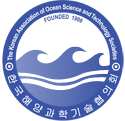Tutorial 3
Title
Technologies for Monitoring Marine Organisms and Hazards
Presenter
Dr.Jaume Piera
Abstract
Marine environments are influenced by a wide diversity plankton organisms and substances suspended in the water column. Real-time measurements of such organisms and substances, across a range of spatial scales are required to understand adequately ecosystem dynamics or monitor those components that may have adverse effects on human health and ecosystems. Many aspects of how plankton communities, nutrients or harmful substances are distributed in the water body, and how they modify their distribution due transport processes remain poorly understood, in large part because we lack critical observational tools. Traditional organism-level sampling strategies are not amenable to high-frequency, long duration implementations. Methods such as conventional microscopic or chemical analysis, for instance, are prohibitively labour intensive and time consuming. In recent years, significant technological advancements have been made for the detection and analysis of organisms and marine hazards. In particular, sensors deployed on a variety of mobile and fixed-point observing platforms provide a valuable means to characterize plankton dynamics and assess hazards. Progress in sensor technology is expected to depend on the development of small-scale sensor technologies with a high sensitivity and specificity towards target compounds or organisms. A variety of platforms are needed to support sensing systems in the ocean, including multiplex and integrated observational technologies. Instruments on satellites, airborne or unmanned aerial vehicles (UAVs) can yield broad spatial synoptic measurements of the surface ocean (with different resolution in each case), but are of limited use in the vertical dimension. Underwater sensor networks with profiling moorings are essential to resolve different physical, chemical, and biological processes that occur between the sea surface and the sea floor and cover a wide range of temporal variability (from short-lived episodic events to climatic trends). Mobile platforms (floats, gliders, and autonomous underwater vehicles -AUVs-) with appropriate sensors provide measurements of spatial variability to complement the fixed sites. Future developments will include the integration of existing methods into complex and operational sensing systems for a comprehensive strategy for long-term monitoring. The combination of sensor techniques on all scales will remain crucial for the demand of large spatial and temporal coverage. The amount of data provided for the different type of observational platforms require the implementation of automatic methods for analysing the data. During the last years different signal or image processing methods has been developed for automatic target identification or classification. The tutorial will review the state-of-the-art of sensors, platforms technologies, signal and image processing methods for the detection and identification of organisms and harmful substances in the ocean and coastal environments. The review will analyse current gaps and future demands, particularly on the need for new sensors to detect marine hazards at different scales in autonomous real or near-real time mode, and the observational strategies to obtain high resolution measurements on a large spatial and temporal coverage. The tutorial is directed mainly toward specialists on observational technologies and marine scientists that are interested on marine technologies applied to marine biological research, but can be also useful for different users involved in environmental monitoring and also modellers interested on assimilating marine biological data.
Presenter Bio
JaumePiera is B.S. in Telecommunications Engineering, Technical University of Catalonia (1991); B.S. in Biology, University of Barcelona (1998); Ph.D. in Environmental Sciences University of Girona (2002). From 2001 to 2004, he was Lecturer in the Department of Signal Theory and Communications at the Technical University of Catalonia. Since 2005 he is a Scientist of the Spanish National Research Council (CSIC) working in the Marine Technology Unit in Barcelona(Spain). Over 20 years of experience in multidisciplinary research programs his research interests are focused on Information Technologies applied to Marine Biology and particularly on Hyperspectral Technologies, Autonomous Platforms, Signal Processing and Bio-optical based Pattern Recognition Techniques. At present he is involved in different projects related to underwater sensors networks, and autonomous based platforms (AUV, UAV) for characterization of coastal processes. Currently he is also leading the development of a new profiling system for concurrent characterization of physical and biological processes at small scale (ANERIS).






